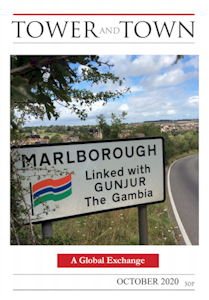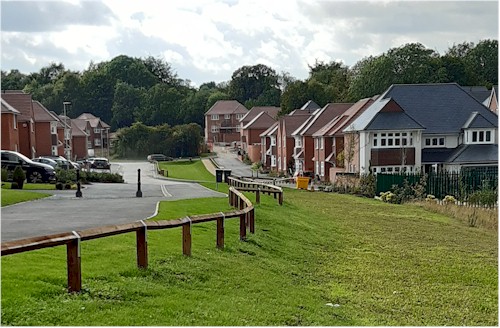

Tower and Town, October 2020 (view the full edition) (view the full edition)A Virtual Tour Through Marlborough (Part 3)The new estate on Salisbury Road is named "Marleberg Grange" or "Chalk Town" and resurrects an ancient name for the town. This was the name given in the "Statutes of Marlborough" in 1267 in the reign of Henry III. The Statutes were enacted at Marlborough Castle and a blue plaque on the entrance pillars to College Court records this event.  Roads in Marleberg Grange are named after Marlborough residents who served in World War I: controversially "Knocker Road" is after a nurse from Marlborough who volunteered for service on the front line in France; she also featured on special stamps which commemorated the centenary. Roads in Barton Park and College Fields are built on the land of Barton Farm which was owned by the College. The roads are named after famous literary Marlburians such as Siegfried Sassoon and John Betjeman but the most famous literary figure of all is William Golding, who went to Marlborough Grammar School. The names for new developments in the town are decided by the Town Council (formerly the Borough) with the agreement of the Post Office. The Town Council and Borough avoid the sort of names dreamt up by developers but this is not necessarily popular with everybody. For example Reeds Ground, named after Captain Reed RN who organised an appeal for a new lifeboat in 1864, remained the same in spite of an appeal from residents in the 1970s. Also the name Tin Pit Lane was retained rather than being changed as requested by some of the residents in the 1990s. May the tradition continue, of giving names that have an historical significance to our ancient market town. P.S. In 2012 I wrote a book "Place Names of Marlborough" which is unfortunately out of print but the Library has copies. David Chandler |